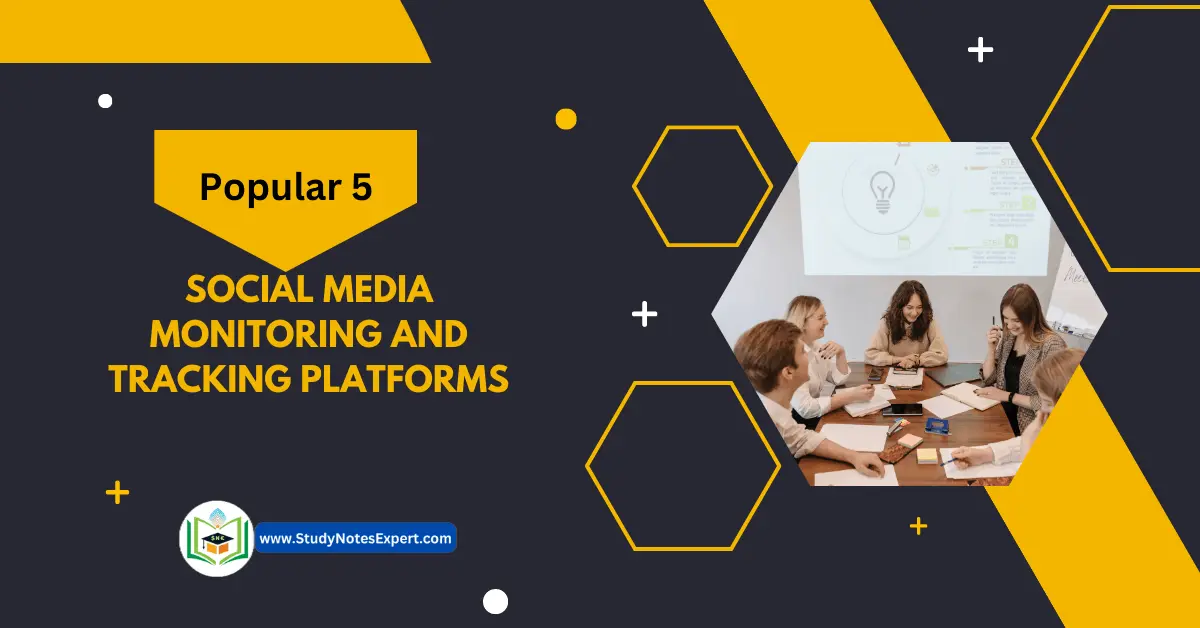The process of promoting a product or a service through social media networks is defined as social media marketing. It might appear too simple, but “making the self known” is a set of events that helps the company establish its presence in the market as different companies use different methods to promote their products or brands.
Social Media Monitoring and Tracking Platforms

Following are the common tracking and monitoring platforms for social media:
1. Non-Specific Platforms
Search engines-Google, Bing, Yahoo, or others where the organization’s name is popping up online, and help it find conversations to join. Google Alerts will e-mail the organization online mentions of keywords-e.g., the organization’s name. This is basic – it can provide a glimpse of monitoring at its simplest. Google Analytics was designed to track traffic and referral data. It is a social media monitoring platform. It can also help organizations better understand their blog’s audience and monitor traffic to their website from all social media channels.
Finally, most social media channels offer some built-in or third-party way to analyze the activity. Facebook Insights is a reasonably powerful tool available to any organization whose page has at least 30 fans. Twitter platforms like HootSuite and Tweet Deck provide basic metrics. Backtype offers a free online keyword monitor. And most blogs can be effectively measured with the blogging site’s built-in metrics, FeedBurner, and web analytics.
2. Aggregating Platforms
For more streamlined or automated monitoring, an entire group of aggregating tools on the market help keep an eye on multiple aspects of an organization’s social media efforts for free. Social Mention aggregates any mention of keywords from over 100 social media sites. By aggregating the platforms, we will form social media monitoring.
Similarly, Nutshell Mail tracks the brand’s social media activity and delivers a summary to the organization’s e-mail inbox on a schedule. Rowfeeder creates reports by tracking keywords, hashtags, or usernames on Twitter and Facebook Addict-o-matic searches the web for the latest news, blog posts, videos, and images based on keywords or names and creates a page with what it finds. Organizations can customize the page and bookmark it for future use.
3. Monitoring Dashboards
Social media monitoring dashboards let organizations see the big picture of their social media presence by displaying several different metrics or similar items in a single place. Google, Google’s free offering, creates a start page that organizations personalize with RSS feeds, news readers, and other gadgets, plus custom searches and access to Gmail and calendars. Similarly, NetVibes collects blogs. RSS feeds. Facebook and Twitter feeds, YouTube channels, and other items organizations select into a single page. Organizations can also create a customized monitoring dashboard by strategically using RSS feeds from their social media channels and feeds from Google Alerts and other tools.
4. Channel-Specific Platforms
Each social media channel has engendered a subset of concrete tools. Tools that pull together and calculate specific measurements can provide some sophisticated metrics organizations want from an expensive tool for free. They offer detailed insight into a small section of the social media activities to inform the focus of its efforts. Klout measures Twitter’s influence. Booshaka measures Facebook fan interactions. Blog Pulse monitors blog trends across the web, PostRank offers daily engagement reports on websites or blogs, and AllFacebookStats.com collects general Facebook page data and calculates change rates and other complicated statistics.
5. Higher-End Platforms
Mid- and high-level tools, sometimes called social media management tools, array of metrics and analysis not possible with the free or lower-end tools. Small Act’s Thrive and Superfast, both at the low-to-middle-end of the scale, offer fairly comprehensive pictures of social media activities. It allow organizations to manage accounts, develop relationships with stakeholders, and measure overall effectiveness. At the higher end of the price scale are Radiant and Lithium, which measure influence, deliver comparisons to competitors and data on the organization’s market share, and provide tangible improvement methods. Both platforms offer non-profit discounts.
Conclusion
In conclusion, social media monitoring is an important exercise in ultra-modern virtual age. It involves tracking and reading social media platforms to accumulate insights and facts about individuals, companies, or brands. Social media monitoring is a powerful device that offers treasured insights, helps manage recognition, supports consumer engagement, and enables proactive choice-making. When used responsibly, it is able to be a precious asset for organizations, governments, and individuals in navigating the complex and ever-evolving social media landscape.

